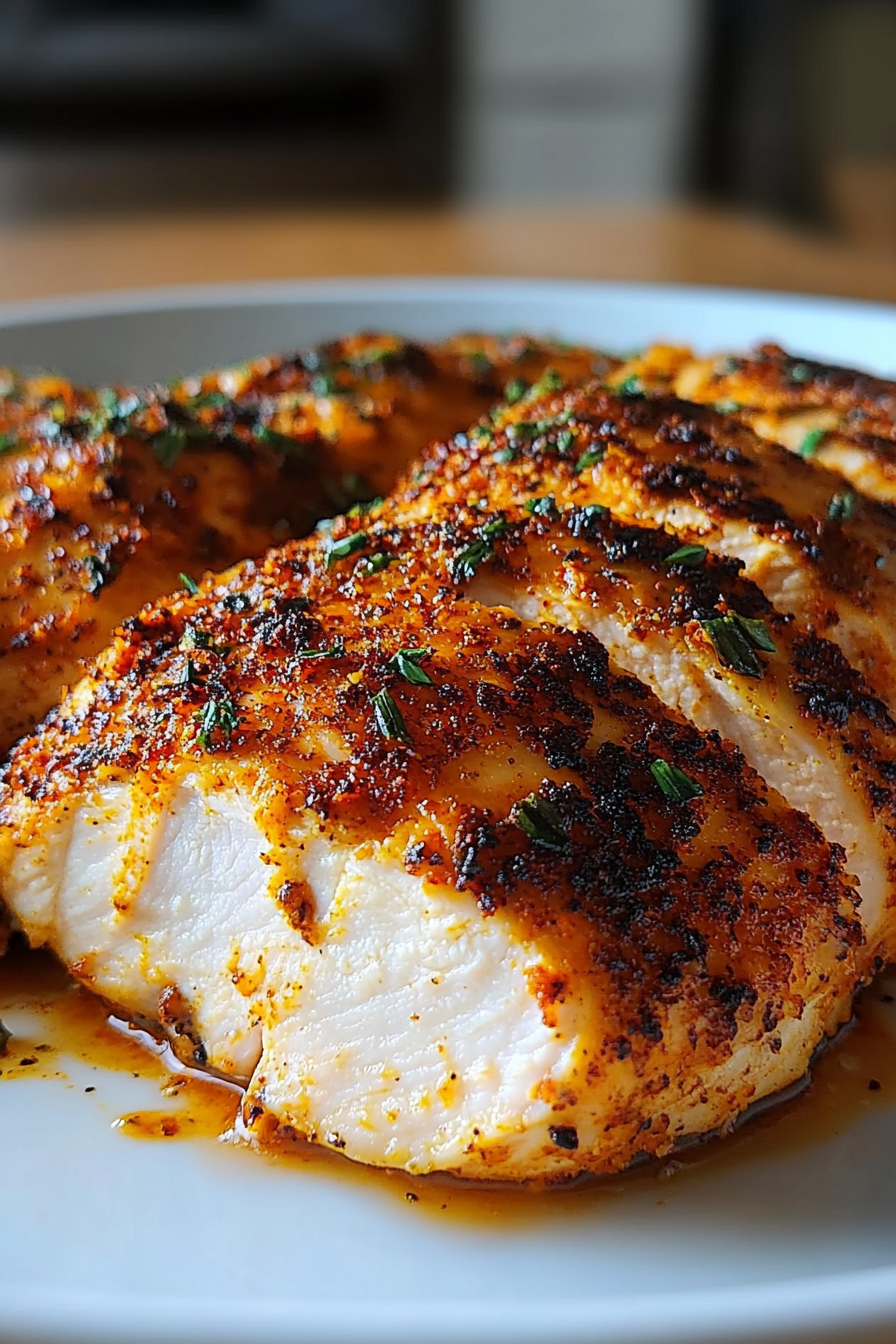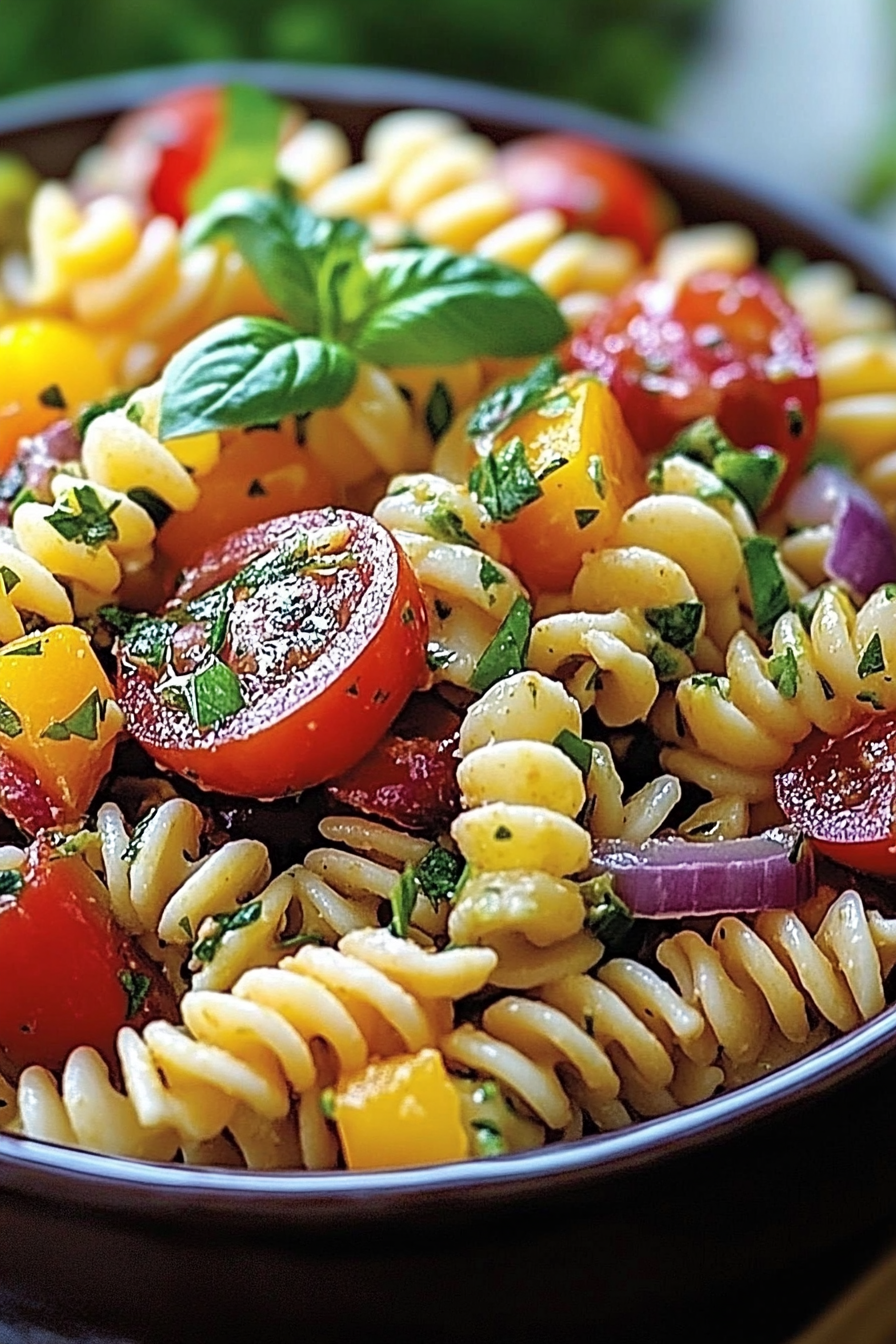The scent hits you the moment the oven warms up—rosemary, olive oil, a little kiss of sea salt—and suddenly the kitchen feels like a welcome hug. I learned this rosemary focaccia bread years ago from an aunt who could coax flavor out of simple ingredients with just a whisper of time and love. It’s one of those recipes that somehow feels luxurious in taste but is incredibly forgiving in practice. Think of it as bread with personality: fluffy air pockets, crispy edges, and that savory perfume that makes the whole house feel like Sunday morning. This rosemary focaccia bread is a nice braid between a rustic loaf and a show-stopping side. It’s a lifesaver on busy weeknights, and a guaranteed crowd-pleaser at gatherings. I make it for breakfast with a soft-boiled egg, for dipping with olive oil at matt-down-dusk evenings, and even as a miniature “pizza crust” for quick weeknight bites. And yes, I always double the olive oil because that’s where the magic hides—the crust turns glossy and deeply flavorful, and the inside stays tender and cake-like.
What is rosemary focaccia bread?
rosemary focaccia bread is essentially an herby, olive-oil-soaked flatbread from Italy. Think of it as bread’s elegant cousin: thick, porous, and surprisingly sturdy, perfect for sopping up sauces or cradling toppings. The name “focaccia” comes from the Latin word focus, meaning fire, which hints at its toasty, oven-warmed crust. This version leans into rosemary for a piney aroma and a hint of peppery bite, with garlic, flaky salt, and a generous drizzle of olive oil. It’s bread that feels celebratory but wears its heart on its sleeve—homey enough to make weeknights feel special, fancy enough for guests. I love that it’s forgiving: a quick dough, a handful of toppings, and a hot oven, and you’ve got something that tastes like it took hours to master. It’s essentially a perfect canvas for your favorite herbs, too—you can riff with thyme, oregano, or even lemon zest if you’re in the mood for a brighter note.
Why you’ll love this recipe?
What I love about this rosemary focaccia bread is how reliably delicious it turns out, even when you’re juggling a million
- Flavor: The aroma of fresh rosemary, the fruity note of olive oil, and a touch of salt create a profile that’s comforting and bright all at once. It’s got that “I baked this myself” confidence without needing fancy equipment.
- Simplicity: You don’t need a mixer or a pro kitchen to pull this off. A big bowl, a wooden spoon, and your hands are all you need. The dough is forgiving, and the resting times give you a chance to tidy up or sneak a hug from a sleeping toddler—depending on your day.
- Cost-efficiency: What is the best way to measure cost-efficiency?: Pantry staples do the heavy lifting here—flour, yeast, olive oil, and a few greens. You can bulk up with a few toppings if you’re feeding a crowd, but the core ingredients won’t break the bank.
- Versatility: It shines as a snack, a side, or a canvas for toppings like cherry tomatoes, olives, or blistered peppers. I often use it as a base for a quick open-faced sandwich, and my kids request it with a simple sprinkle of sea salt and extra rosemary.
If you’ve got a stash of herbs growing in a windowsill or a bottle of olive oil begging to be used, this recipe is your friend. It’s also a crowd-pleaser for potlucks and a comforting “I’m right here in the kitchen with you” moment when someone needs a warm bite after a long day. And yes—the house smells incredible during the bake, which makes the wait feel almost ceremonial rather than inconvenient.
How to Make rosemary focaccia bread
Quick Overview
In about 15 minutes of hands-on work and a comfortable rise, you’ll have a pan full of pillowy focaccia. The technique is forgiving: you mix dry ingredients, mix wet ingredients, bring them together, let the dough rest to hydrate, and then press it into a well-oiled pan, dimple with your fingertips, and brush with a rosemary-garlic oil before baking. The result is a bread that’s crisp on the bottom, soft and airy on top, with fragrant rosemary pockets throughout. If you’re short on time, you can forgo a long knead and use a no-knead approach—the autolyse step does most of the work for you, which is one of the things I love about this particular version.
Ingredients
For the Main Batter:
– 3 1/2 cups (420 g) bread flour or all-purpose flour
– 1 1/2 cups warm water (about 110°F/45°C)
– 2 tsp instant yeast (or 1 1/4 tsp active dry yeast, proofed in warm water)
– 1 tsp sugar
– 1 1/2 tsp fine sea salt
– 3-4 tbsp extra-virgin olive oil (plus more for the pan)
For the Filling:
– 1/4 cup extra-virgin olive oil
– 2-3 tsp finely chopped fresh rosemary
– 1 small garlic clove, minced (optional but delicious)
– 1/2 tsp flaky sea salt (plus more for sprinkling)
For the Glaze:
– 2–3 tbsp extra-virgin olive oil
– 1/2 tsp fresh rosemary, finely chopped (optional)
– Flaky sea salt, a pinch of chili flakes (optional)
Step-by-Step Instructions
Step 1: Preheat & Prep Pan
Set the oven to 450°F (230°C). Lightly oil a rimmed baking sheet or a 9×13-inch pan with a generous layer of olive oil. The olive oil isn’t just for flavor—it keeps the bread from sticking and gives you that signature glossy bottom. I like to swirl the oil so it lines the entire surface; you’ll thank yourself later when you flip it out or slice into it while it’s steaming warm.
Step 2: Mix Dry Ingredients
In a large bowl, whisk together the flour, yeast, sugar, and salt. The dry mix should be evenly distributed, especially the salt, which helps balance the yeast and keeps the crumb open rather than dense.
Step 3: Mix Wet Ingredients
In a separate bowl, combine the warm water with 2 tablespoons of olive oil. If you’re using active dry yeast, give it a quick bloom in a tablespoon of the warm water for about 5 minutes until it’s frothy. If you’re using instant yeast, you can skip this bloom and just combine with the dry ingredients.
Step 4: Combine
Pour the wet mixture into the dry ingredients and stir with a wooden spoon until a shaggy dough forms. It will be soft and a little sticky— that’s what you want. Cover the bowl with a clean towel and let it rest for about 15 minutes to hydrate the flour. This autolyse step is where the magic starts; you don’t need to knead yourself to death to get a tender crumb.
Step 5: Prepare Filling
While the dough rests, whisk together the filling oil, chopped rosemary, and garlic if you’re using it. This rosemary oil is your secret weapon—it will flavor the crumb and the crust with a bright, piney note that makes this bread feel special.
Step 6: Layer & Swirl
Fold the dough gently in the bowl to bring it together, then transfer it to the oiled pan. Drizzle a little more olive oil on top and use your fingers to spread the dough to the edges. Flip the dough once or twice if it resists; you want an even layer about 1/2 inch thick. Dimple the surface deeply with your fingertips all over the dough—these dimples are essential; they trap air and create those glorious pockets once it bakes. Brush the rosemary oil over the surface and sprinkle with flaky salt. If you want, press a few rosemary sprigs into the surface for a rustic look and extra aroma.
Step 7: Bake
Bake for 20–25 minutes, until the edges are golden brown and the center is set but still a touch soft to the touch. If you like a crisper bottom, give the pan a quick tap on the oven rack halfway through to help any stray air bubble settle and the crust to crisp evenly. Every oven is a little different, so a quick visual cue—rich golden color and a hollow sound when tapped—will tell you it’s ready.
Step 8: Cool & Glaze
Immediately after removing from the oven, drizzle a little more olive oil over the top and scatter a pinch of sea salt. A light glaze of olive oil while it’s still warm makes the crust glossy and irresistible. Let it cool for about 10 minutes in the pan, then transfer to a rack or a cutting board. If you’re in a hurry, you can slice it warm, but a short rest helps the interior set for clean slices.
Step 9: Slice & Serve
Slice into squares or long strips—whatever suits your mood. The crumb should be airy with visible holes, the edges crisp and chewy, and the rosemary perfuming the air. It’s lovely with a simple olive oil dip, roasted tomatoes, or a soft cheese like burrata or ricotta. My kids love it as a snack with a little honey and sliced almonds for a sweet-salty bite. Trust me on this one: the first bite is the best bite.
What to Serve It With
Rosemary focaccia bread feels right at home in so many moments. Here are a few of my favorite pairings and occasions:
For Breakfast: Warm slices with scrambled eggs, a drizzle of olive oil, and a cup of strong coffee. The bread’s soft interior makes morning eggs feel extra indulgent without extra work.
For Brunch: A platter with burrata, blistered tomatoes, olives, and a crisp green salad. The bread doubles as a utensil for scooping up creamy cheese and bright tomato juices.
As Dessert: A surprising, delightful finish when you brush the crust with a touch of honey and a pinch of flaky salt—serve with fresh berries on the side for contrast.
For Cozy Snacks: Cut into thick focaccia wedges and serve with hummus, olive tapenade, or a simple Whipped Feta. It’s the kind of snack that disappears in minutes at my house.
This version shines in family gatherings because it’s forgiving, portions well, and leaves plenty of room for toppings. It’s my go-to Sunday bake when I want a little comfort with minimal effort, and I’m never disappointed by the aroma that fills the kitchen.
Top Tips for Perfecting Your rosemary focaccia bread
Little adjustments have saved my sanity more times than I’d like to admit. Here are the tweaks I reach for most often:
Dough handling: If it’s very sticky, oil your hands lightly and work with a generous amount of flour on the surface. A well-oiled pan helps, too. Don’t overwork the dough; the beauty of focaccia is a light, airy crumb, not a dense, tight one.
Rosemary distribution: Reserve a small amount of rosemary to press into the surface after you’ve spread the dough. This ensures evenly dispersed aromatics and a gorgeous top texture.
Ingredient swaps: You can swap half the bread flour for Whole Wheat for a nuttier flavor, but maintain the hydration so the dough isn’t dry. For a dairy-free version, skip any butter; olive oil keeps the fat profile nice and flexible.
Swirl & pattern: If you want a more dramatic marbled look, after you flatten the dough, drizzle a small amount of rosemary oil in a zig-zag pattern and press gently so it sticks—this gives a rustic, artisan finish.
Baking tweaks: If your oven runs cool, give it a few extra minutes, and if it roasts too fast, cover the top loosely with foil to avoid over-browning. Keep an eye on the color rather than the timer; the goal is a deep golden crust with a soft, airy crumb inside.
Glaze variations: For a different twist, mix lemon zest into the glaze for a bright pop, or add chili flakes for warmth. The glaze is your vehicle for personality—don’t be afraid to pilot a few small changes.
Storing and Reheating Tips
Leftover rosemary focaccia bread is rare in my house, but when it happens, here’s how I handle it so it still feels fresh:
Room Temperature: Store in a breathable bread bag or a lined towel in a container for up to 2 days. The top won’t stay as crisp as day one, but the crumb stays soft and flavorful if you keep it covered.
Refrigerator Storage: You can refrigerate for up to 3 days, but it’s best to reheat to bring back some of that crusty texture. Wrap in foil and warm in a low oven or in a toaster oven until warm.
Freezer Instructions: Freeze baked, cooled slices tucked in a tight bag for up to 1 month. Thaw at room temperature and reheat briefly in a hot oven to revive the crust.
Glaze Timing Advice: If you’re freezing, skip the extra glaze until you reheat—then brush with a fresh layer to revive the gloss and aroma.
Frequently Asked Questions
Can I make this gluten-free?
Yes. Use a gluten-free all-purpose Flour Blend that’s designed for bread, and consider adding a bit extra water if your blend feels dry. Gluten-free bread benefits from a touch more moisture and a longer rest time, so give the dough an extra 10 minutes to hydrate if needed. The result will be lighter and a touch denser than the gluten version, but still wonderfully flavorful.
Do I need to peel the rosemary?
Nope. Fresh rosemary leaves are tender enough to chop and scatter, and the oils release beautifully during baking. If you’re using dried rosemary, crush it a bit to release flavor, then sprinkle generously over the top.
Can I make this as muffins instead?
Absolutely. Divide the dough into muffin tins, let them rise a bit more, and bake at 425°F (220°C) for 12–15 minutes. They’ll be a touch denser than sheet-panned focaccia, but still deeply flavored and perfect for grabbing on the go.
How can I adjust the sweetness level?
Focaccia is savory by nature, but a tiny pinch of sugar helps balance the yeast and browning. If you want less sweetness, reduce sugar to 1/2 teaspoon, or skip it entirely if your flour already has a natural depth.
What can I use instead of the glaze?
Skip the glaze if you prefer a drier crust, or swap in a mixture of olive oil and a little lemon juice for brightness. A light sprinkle of grated Parmesan or pecorino after it comes out of the oven adds a salty bite that pairs beautifully with rosemary.
Final Thoughts
I’ve teased out the little rituals that make this rosemary focaccia bread special: the way the olive oil shimmers on the pan, the moment the rosemary perfumes the room, the first slice that reveals a cavernous, soft crumb. It’s the recipe I reach for when I want comfort that doesn’t require fuss, a bread that makes a simple soup or salad feel like a feast. It’s versatile enough to play the lead or to be a supportive side, and it’s forgiving enough for a busy weeknight while still tasting like a celebration. If you’re trying it for the first time, give yourself a generous 2 hours from start to finish—you’ll see why so many of us keep a warm tray in the kitchen during family dinners. Happy baking—and I can’t wait to hear how yours turns out. If you try any fun variations, drop a note in the comments so I can try them too!

rosemary focaccia bread
Ingredients
Dough
- 3.5 cups all-purpose flour
- 2 teaspoons instant yeast
- 1.5 teaspoons salt
- 1.5 cups warm water about 105-115°F
- 0.25 cup olive oil
Topping
- 2 tablespoons olive oil
- 2 tablespoons fresh rosemary chopped
- 1 teaspoon flaky sea salt
Instructions
Preparation Steps
- In a large bowl, whisk together the flour, yeast, and salt.
- Pour in the warm water and olive oil. Stir with a wooden spoon or spatula until just combined and a shaggy dough forms.
- Cover the bowl with plastic wrap and let it rise in a warm place for 1 to 1.5 hours, or until doubled in size.
- Grease a 9x13 inch baking pan with 1 tablespoon of olive oil. Turn the dough out into the prepared pan. Gently stretch the dough to fill the pan, using oiled hands if necessary.
- Cover the pan and let the dough rest for another 20-30 minutes.
- Preheat your oven to 400°F (200°C).
- Drizzle the remaining 2 tablespoons of olive oil over the dough. Dimple the dough all over with your fingertips. Sprinkle with chopped rosemary and flaky sea salt.
- Bake for 20-25 minutes, or until golden brown and cooked through.
- Let cool in the pan for a few minutes before transferring to a wire rack to cool completely.
Notes
Featured Comments
“Impressed! Clear steps and family favorite results. Perfect for busy nights.”
“New favorite here — quick weeknight win. crowd-pleaser was spot on.”
“Super easy and turned out amazing! My family asked for seconds. Saving this one.”
“This sweet treat was absolutely loved — the cozy really stands out. Thanks!”
“Made it tonight and wow — comforting! Will definitely make rosemary focaccia bread again.”
“Packed with flavor and so simple. Exactly what I wanted from rosemary focaccia bread.”












